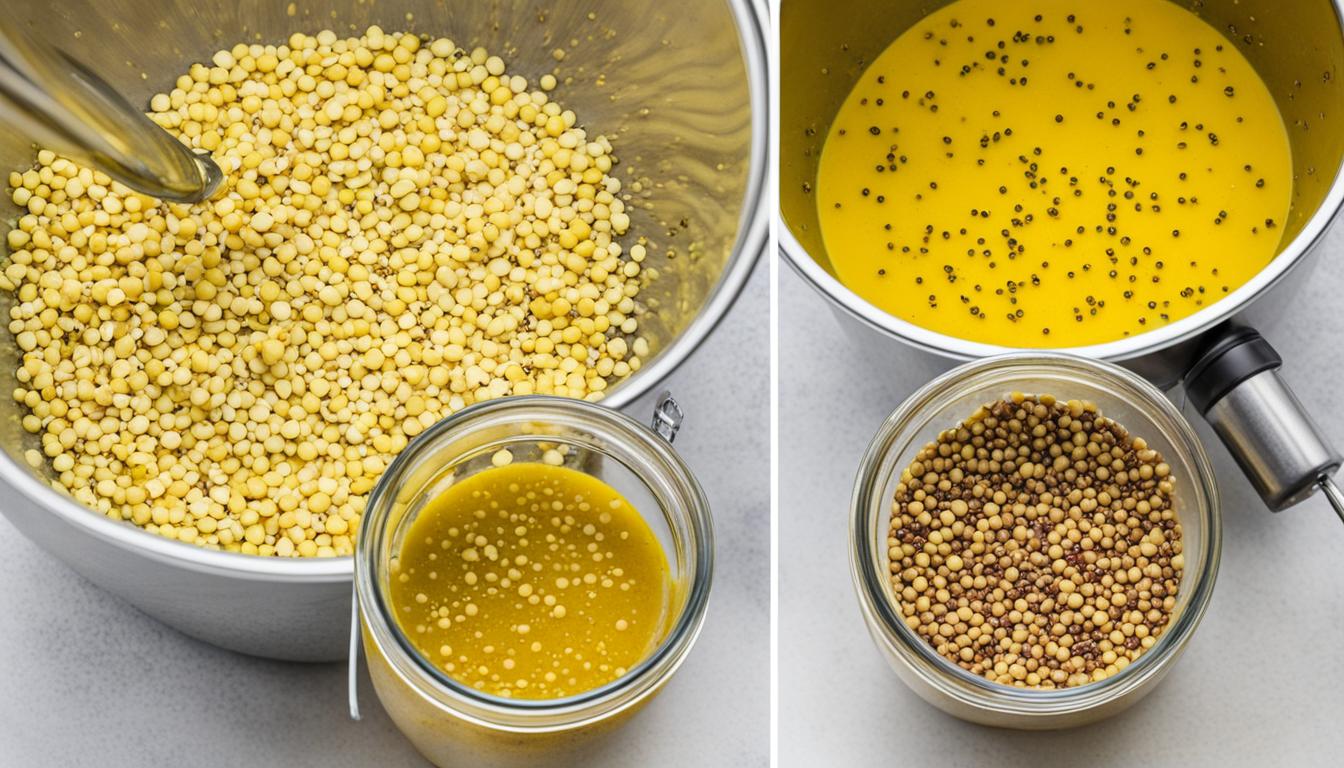Have you ever wondered what sets homemade mustard apart from store-bought options? Is it the rich flavor, the satisfying texture, or the sense of accomplishment that comes from making your own condiment? Today, we’re going to reveal the secret to creating a homemade whole grain Dijon mustard that will elevate your culinary creations to new heights.
Many people believe that making mustard at home is a complicated and time-consuming process. However, with our simple step-by-step guide, we’ll show you how to make your own whole grain Dijon mustard with ease. No fancy equipment or hard-to-find ingredients required.
Soaking and Blending the Mustard Seeds
To start making your own whole grain Dijon mustard at home, we will guide you through the step-by-step process of soaking and blending the mustard seeds. This tutorial will help you create a delicious condiment that will elevate your meals to a whole new level of flavor.
First, gather a combination of brown and yellow mustard seeds. These seeds will provide a balance of flavors and textures in your Dijon mustard. Place the mustard seeds in a bowl and cover them with a mixture of dry white wine and vinegar. The wine and vinegar combination helps mellow the heat of the seeds and develop a smoother flavor profile.
Allow the mustard seeds to soak in the wine and vinegar mixture for two days. This soaking process is essential to soften the seeds and infuse them with the flavors of the liquid. Patience is key as the seeds absorb the rich flavors, which will ultimately contribute to the complexity of your homemade Dijon mustard.
After the soaking period, it’s time to blend the mustard seeds. Use a blender or food processor to pulse the soaked seeds until you achieve a thick, paste-like consistency. This blending step breaks down the seeds slightly, releasing their oils and creating a cohesive texture.
For an added touch of sweetness, incorporate a small amount of brown sugar into the blend. The brown sugar complements the pungency of the mustard seeds, enhancing the overall taste of your homemade whole grain Dijon mustard.
Once you’ve achieved a smooth and well-blended texture, transfer the mustard mixture into a clean, airtight container. Place the container in the refrigerator to allow the flavors to develop and the bitterness to mellow. Letting the mustard rest for an additional two days will result in a rich and full-flavored whole grain Dijon mustard.
Our step-by-step whole grain Dijon mustard tutorial ensures that you can make your own delicious homemade mustard with ease. Follow these instructions to create a condiment that rivals any store-bought version in flavor and quality.
Storing and Using Homemade Whole Grain Mustard
Once you’ve made your homemade whole grain Dijon mustard, it’s important to store it properly for maximum freshness. Transfer the mustard to an airtight container and keep it in the refrigerator. Homemade mustard will keep for up to 1 year when stored correctly.
When using your homemade mustard, remember that it’s not only a great spread for sandwiches but also a versatile condiment for a charcuterie and cheese board, vinaigrettes, dressings, and dips. The flavor and texture of homemade whole grain Dijon mustard add a delightful complexity to a variety of dishes.
Enjoy the satisfaction of making and using your own homemade condiment. With this simple and easy whole grain Dijon mustard homemade recipe, you can elevate your culinary creations and impress your guests. Try it today and discover the joy of homemade condiments!
